Bakamen Odori (“Funny Mask Danceâ€) 船橋「ã°ã‹é¢è¸Šã‚Šã€
Funabashi’s traditional performing arts
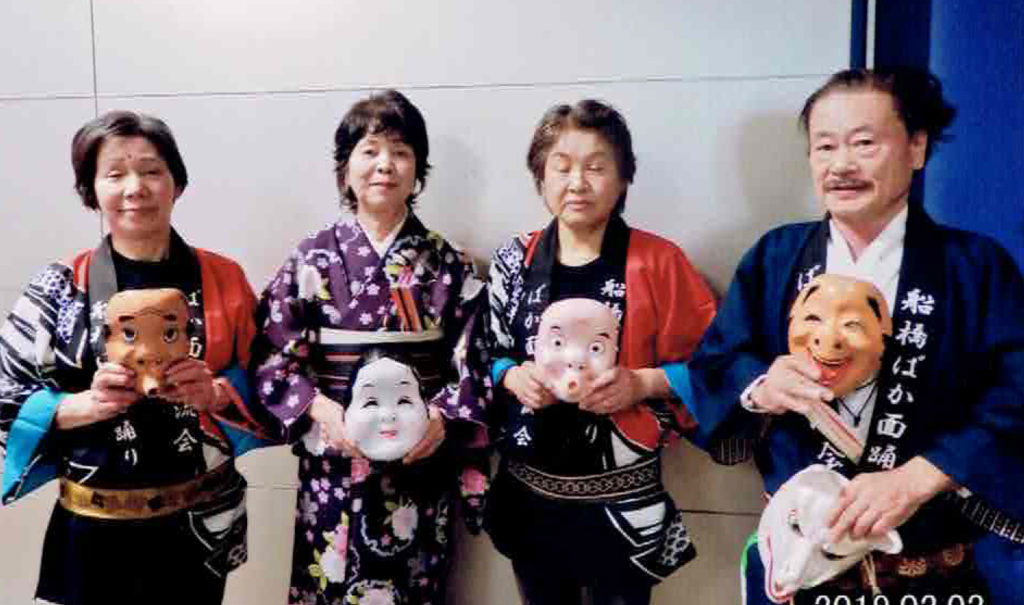
Minatomachi and Honcho, parts of Funabashi, were called Ryoshimachi, or a Fisherman’s Town, in the past. For about 10 years since 1887, this town was riddled with illness, accidents at sea, and poor catch. In praying for good health, fishing success, and sea safety, they dedicated the Mikoshi (or portable Shrine) to the Funabashi Daijingū Shrine and Yatsurugi Shrine in the summer festival and danced Bakamen Odori.
Four types of masks and movements:
- Okame — A smiling woman waiting for her husband to return from fishing, accompanied by gentle, quiet, and slow walking
- Hyottoko — A disgruntled man who could not go fishing due to bad weather crouches and walks with big strides
- Warai — A laughing mask, happy from a big catch
- Okori — An angry face because fish cannot be caught
船橋ã®æ¼å¸«ç”ºï¼ˆç¾åœ¨ã®æ¹Šç”ºåœ°åŸŸã¨æœ¬ç”ºã®ä¸€éƒ¨ï¼‰ã§ã¯ã€æ˜Žæ²»ï¼’ï¼å¹´ä»£çµ‚ã‚ã‚Šã‹ã‚‰ï¼“ï¼å¹´ä»£åˆã‚ã«ã‹ã‘ã¦ã€ç—…æ°—ã®ç™ºç”Ÿã€æµ·ã®äº‹æ•…ã€ã•ã‚‰ã«ã¯éšãŒã¨ã‚Œãªã„時期ãŒã¤ã¥ãã¾ã—ãŸã€‚æ¼å¸«ãŸã¡ã¯æµ·ä¸Šã®ç„¡äº‹ãƒ»å®‰å…¨ã€å¤§æ¼ãƒ»ä¸‡æ³ã‚’祈願ã—ã¦åŽ„払ã„ã‚’ã—ã¾ã—ãŸã€‚明治33年ã«ã¯èˆ¹æ©‹å¤§ç¥žå®®ãƒ»å…«å‰£ç¥žç¤¾ã®å¤ç¥ã‚Šã«ç¥žè¼¿ã‚’奉ç´ã—ã€æš®ã‚‰ã—ã¯å¤ç¥ã‚Šã¨ã¨ã‚‚ã«æ©ã‚“ã§ãã¾ã—ãŸã€‚
Hanayagi Mioran 花柳美桜è˜
Japanese classical dance, Hanayagi-ryu
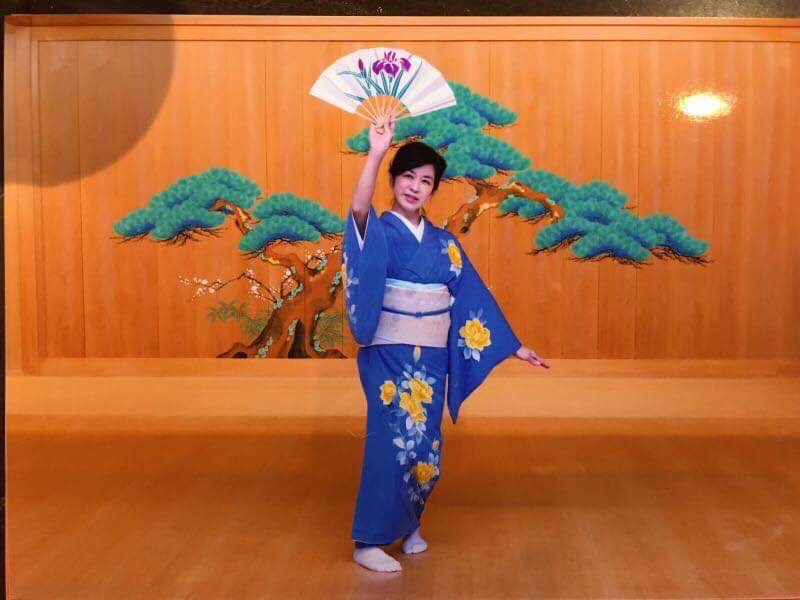
Hanayagi Mioran started studying Japanese dance in 2010 from the master of the Hanayagi school of Japanese dance and was given the stage name of Hanayagi Mioran in 2018. She will perform “Sakura Sakura†to celebrate the Cherry Blossom Festival.
2010å¹´ èŠ±æŸ³æµ å¸«ç¯„ 花柳美桜世æ°ã«å¸«äº‹ã™ã‚‹ã€‚ 2018å¹´ 花柳美桜è˜ã®åã‚’é ‚ãã€æ—¥ã€… 芸事ã«åŠ±ã‚“ã§ã„る。 今回ã®èˆžå°ã§ã¯ æ¡œç¥ã‚Šã«ã¡ãªã‚“ã§ã€Œã•ãらã•ãらã€ã‚’ 情緒深ã舞ã„ã¾ã™ã€‚
Hanayagi Miosa 花柳美桜沙
Japanese classical dance, Hanayagi-ryu
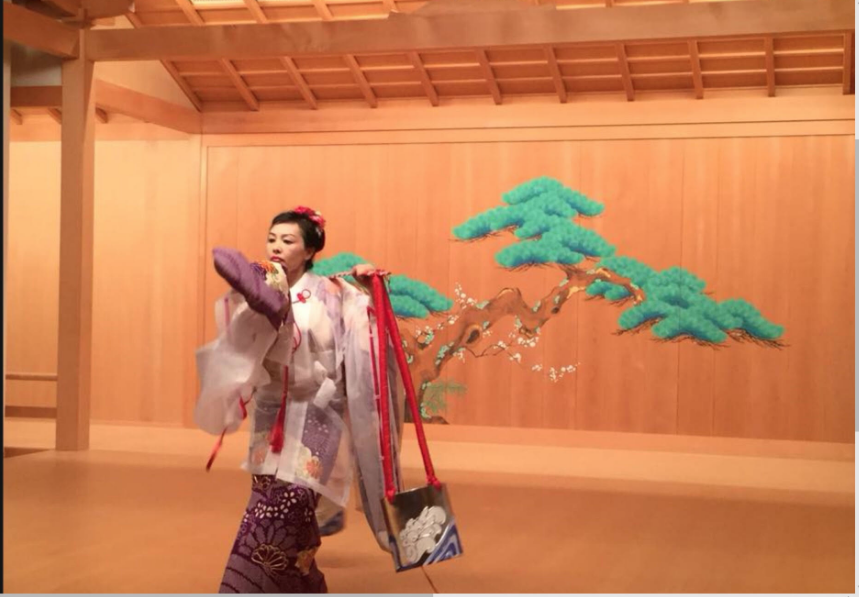
Hanayagi Miosa started studying Hanayagi dance in 2008 from the master of the Hanayagi school of Japanese dance. She was promoted to accredited master in 2012 and started performing internationally in Sao Paulo and Romania. She will perform, “Fuji Musume,†a fairy of wisteria flower, expressing a woman in love.
2008年より花柳æµæ—¥æœ¬èˆžè¸Šå¸«ç¯„花柳桜美世æ°ã®ä¸‹ã§ç¨½å¤ã‚’ç©ã¿ã€2012å¹´ã«åå–ã¨ãªã‚Šã€ã‚µãƒ³ãƒ‘ウãƒã€ãƒ«ãƒ¼ãƒžãƒ‹ã‚¢ãªã©ã§æ—¥æœ¬èˆžè¸Šã‚’披露ã—ãŸçµŒé¨“ãŒã‚る国際派ã®è¸Šã‚Šæ‰‹ã€‚ç¾åœ¨ã¯è‹±èªžé€šè¨³ã‚³ãƒ³ã‚µãƒ«ã‚¿ãƒ³ãƒˆã¨ã—ã¦æ±äº¬ã§å‹¤å‹™ã€‚今回ã®èˆžå°ã§ã¯è—¤ã®ç²¾ã«ãªã‚Šã€æ‹ã™ã‚‹å¥³ã”ã“ã‚を表ç¾ã™ã‚‹ã€‚
Japanese Style Performance WAWAWA (Kimono Kitsuke Mai) JSP・WAWAWA ç€ç‰©ç€ä»˜ã‘舞
Wearing kimono to music, dance
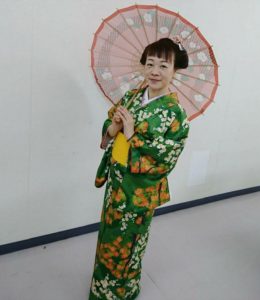
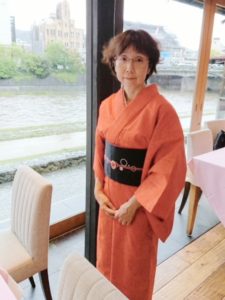
Yuki Kondo and Yasuko Onari will don hakama to music and change into
近藤由紀ã•ã‚“ã¨å¤§æˆåº·åãŒã€éŸ³æ¥½ã«åˆã‚ã›ã¦ã€Œè¢´(ã¯ã‹ã¾)ã€ã‚’ç€ãŸã‚Šã€ã€Œæ‰“ã¡æŽ›ã‘(ã†ã¡ã‹ã‘)ã€ã¸ç€ãŒãˆã¾ã™ã€‚「打ã¡æŽ›ã‘ã€ã¯ç´„1ï¼ï¼å¹´å‰ã®ç€ç‰©ã§ã™ã€‚2曲目ã‹ã‚‰ã¯ã€Œå‰µä½œå¸¯çµã³ã€ã‚’ã—ã¾ã™ã€‚「ã¤ã¾ã¿ç´°å·¥ã€ã¨è¨€ã†æ±Ÿæˆ¸æ™‚代ã‹ã‚‰ã®ä¼çµ±çš„ãªå°ç‰©ã‚’用ã„ã¦ã€å’Œã®ä¸–界を楽ã—ã表ç¾ã—ã¾ã™ã€‚
La Sakura Ladies ラサクラレディース
Women’s chorus group
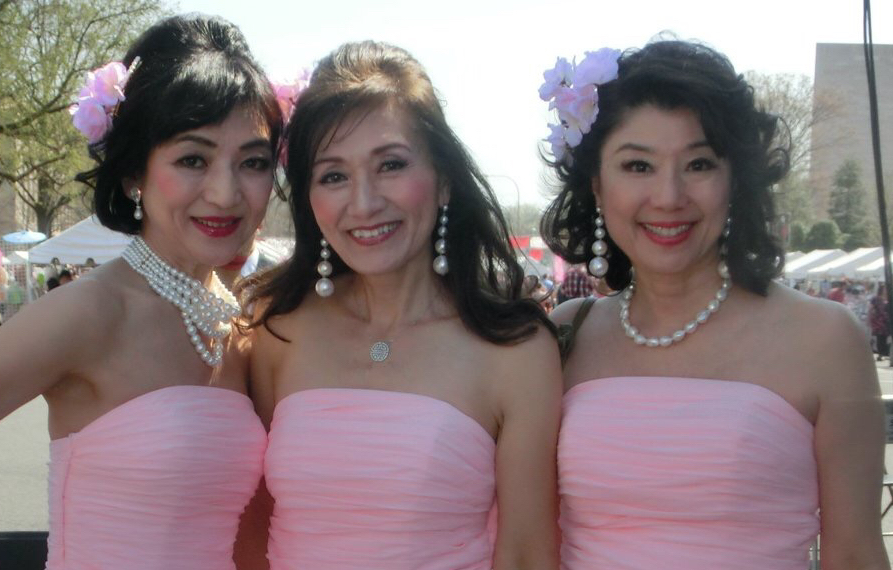
Our repertoire includes Japanese popular songs from the genre’s “golden age” of the
日本ã®æŒè¬¡æ›²ã®é»„金時代ã®ï¼—ï¼ï½žï¼˜ï¼å¹´ä»£ã®æ›²ã€J-POPã€æ‡ã‹ã—ã„日本ã®æŒã€ã‚¢ãƒ¡ãƒªã‚«ã®ãƒãƒƒãƒ—スをæŒã£ã¦ã„ã¾ã™ã€‚ 日本ã®æŒã€ä¸–ç•Œã®æŒã‚’æŒã£ã¦å›½éš›è¦ªå–„ã«è²¢çŒ®ã™ã‚‹ã“ã¨ã‚’目指ã—ã¦ãŠã‚Šã¾ã™ã€‚ãã—ã¦ä¸é«˜å¹´ãŒå…ƒæ°—ã«æ¥½ã—ãéŽã”ã›ã‚‹ã‚ˆã†ã«ã‚¨ãƒ¼ãƒ«ã‚‚é€ã£ã¦ã„ããŸã„ã¨æ€ã„ã¾ã™ã€‚ グループçµæˆé–“ã‚‚ãªã„2015å¹´ã«ã“ã®ã‚µãƒ³ãƒ•ãƒ©ãƒ³ã‚·ã‚¹ã‚³ã®æ¡œç¥ã‚Šã®èˆžå°ã«ç«‹ãŸã›ã¦é ‚ãã€ä»Šå›ž4å¹´ã¶ã‚Šã«åˆã“ã¡ã‚‰ã§æŒã‚ã›ã¦é ‚ã‘ã‚‹ã“ã¨ã‚’嬉ã—ãã€å…‰æ „ã«æ€ã„ã¾ã™ã€‚
RIHAKU INOUE 井上ç†ç™½
Japanese calligraphy, art
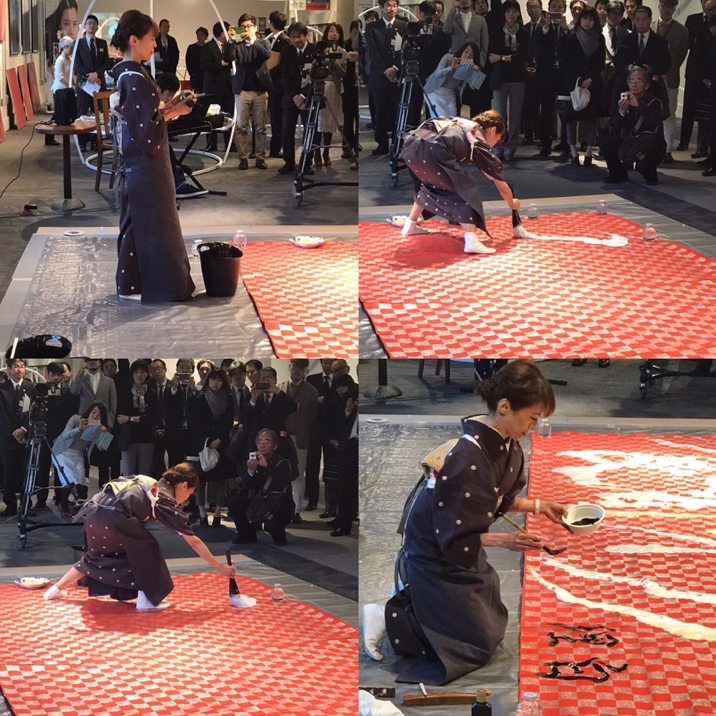
RIHAKU creates a new type of Japanese calligraphy that uses not only ink but also incorporates color, such as acrylic paints. She presents the beauty of “Shoâ€, instant art, to the world and attempts to use more three-dimensional, active expressions. Even if the audience has no knowledge of Japanese characters, she wants this contemporary Japanese calligraphy to stimulate the senses of people across the world and reach their souls. http://i-rihaku.com
「書ã€ã¨ã¯ã€çž¬é–“瞬間ã®æ™‚é–“ã¨å…±å˜ã—ã¦ç”Ÿã¾ã‚Œã‚‹ä¸€çž¬å‹è² ã®ã‚¢ãƒ¼ãƒˆã€ãã—ã¦ãã®çž¬é–“アート「書ã€ã®ã€Œç¾Žã€ã®æ„Ÿå‹•ã‚’ã€ä¸–ç•Œã¸ä¼ãˆãŸã„。ãŸã¨ãˆãã®æ–‡å—を知らãªã„人ãŒè¦³ãŸã¨ã—ã¦ã‚‚ã€å›½å¢ƒã‚’越ãˆã¦ã€ä¸–ç•Œã®äººã€…ã®äº”æ„Ÿã«åƒãã‹ã‘ã‚‹ã€è¦³ã‚‹äººã®å¿ƒã«éŸ¿ãã€æ–°ã—ã„日本書é“芸術・アートã§ã‚ã‚ŠãŸã„。ã ã‹ã‚‰ã“ãã€å¾“æ¥ã®ç´ æã«åŠ ãˆã¦ãƒšã‚¤ãƒ³ãƒˆå¯èƒ½ãªã‚ã‚‰ã‚†ã‚‹ç´ æを使用ã—ã€å‹•ãã®ã‚ã‚‹ã€ã‚ˆã‚Šç«‹ä½“çš„ã«è¡¨ç¾ã™ã‚‹äº‹ã‚’試ã¿ã‚‹ã€‚
Yusui å‹ç¿
Japanese calligraphy, art
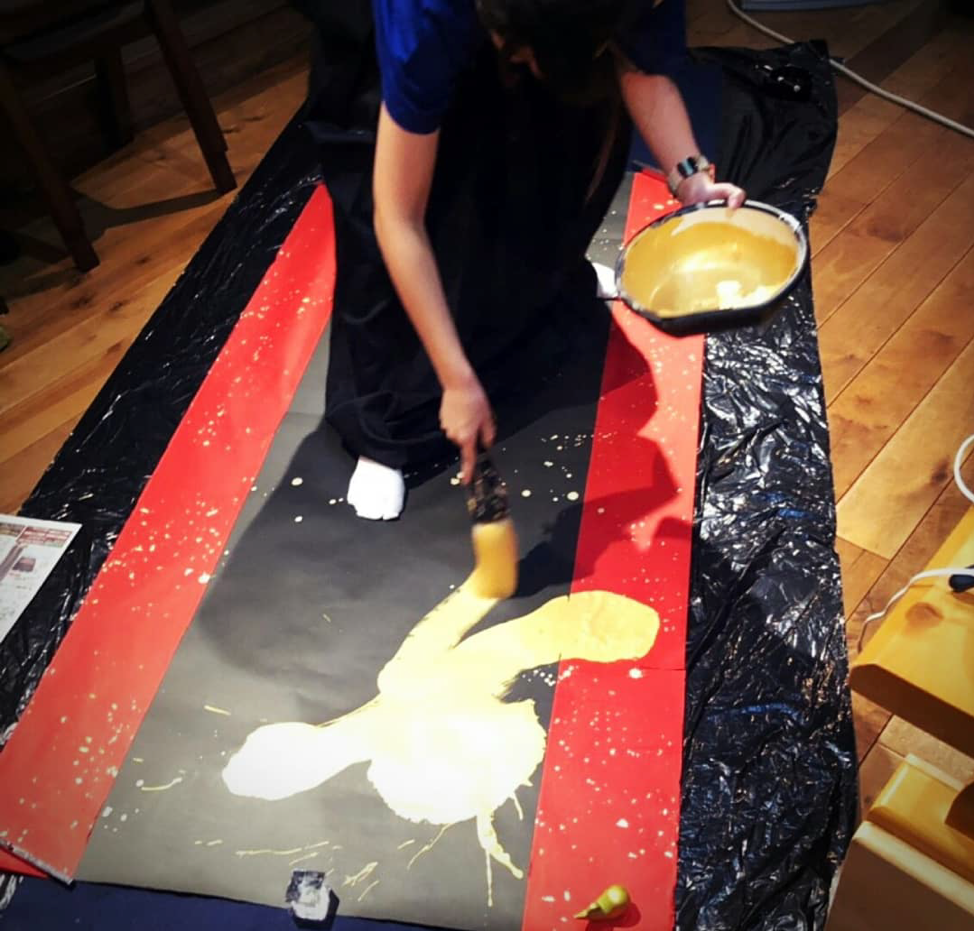
Yusui started calligraphy at 5 years of age and was granted her calligraphy teaching license at 20. She holds many workshops in Japan and around the world, promoting calligraphy as a fun and accessible activity. She wants to be an ambassador of Japanese culture through her calligraphy.
5æ‰ã‚ˆã‚Šæ›¸é“ã‚’å¦ã³20 æ‰ã§å¸«ç¯„å–得。書é“ã‚’ã‚‚ã£ã¨â¾è¿‘ã§æ¥½ã—ã„ã‚‚ã®ã«ã¨å…¨å›½ã§æ›¸é“ワークショップを開催ä¸ã€‚⽇本ã®å’Œã®â½‚化を⽇本ã®â¼ˆã«ãã—ã¦ä¸–ç•Œã®â¼ˆã«ä¼ãˆã‚‹æž¶ã‘æ©‹ã«ãªã‚ŠãŸã„ã§ã™ã€‚
Master Yanagiya Tozaburo III 柳家 æ±ä¸‰æ¥¼
Rakugo, Japanese traditional comedy
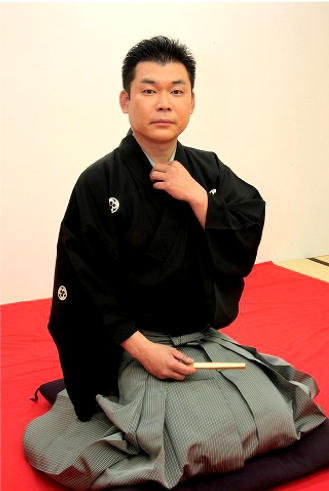
Yanagiya Tozaburo III became a disciple of master Rakugo performer Yanagiya Gontaro III in 1999, and himself achieved the master “Shin’uchi†rank in 2014. In addition to performing classic works and appearing on television programs, Yanagiya Tozaburo III has adapted Rakugo stories into stage plays and vice versa. In 2010 he created a Rakugo version of Anton Chekhov’s “The Darling.†He was awarded the Agency for Cultural Affairs’ Arts Festival Newcomer Award in 2016.
1999å¹´ 三代目柳家権太楼ã«å…¥é–€ã—ã€2014年真打昇進ã¨åŒæ™‚ã«ã€Œä¸‰ä»£ç›®ãƒ»æ±ä¸‰æ¥¼ã€ã‚’襲å。岡本マã‚賞や第71回文化åºèŠ¸è¡“ç¥æ–°äººè³žã‚’å—賞。å¤å…¸è½èªžã¯ã‚‚ã¨ã‚ˆã‚Šã€è¿‘å¹´ã¯æ–°ä½œè½èªžã‚„ãƒã‚·ã‚¢ã®ä½œå®¶ãƒã‚§ãƒ¼ãƒ›ãƒ•ã®ä½œå“を翻案ã—è½èªžåŒ–。日本国内ã®ã¿ãªã‚‰ãšã€è‹±èªžã«ã‚ˆã‚‹è½èªžã‚’アメリカやカナダãªã©ã§ã‚‚公演。テレビ「笑点ã€ã€ŒNHKæ¡‚æ–‡çã®æ¼”芸図鑑ã€ã€Œã‚¢ãƒ‰è¡—ック天国ã€ä»–ã€å‡ºæ¼”å¤šæ•°ã€‚æ˜ ç”»ã€Œã‚°ãƒƒãƒ‰ãƒ¢ãƒ¼ãƒ‹ãƒ³ã‚°ã‚·ãƒ§ãƒ¼ã€ã€Œè½èªžç‰©èªžã€ã€èˆžå°ã€ŒæŸ³å®¶æ±ä¸‰æ¥¼ä¸€åº§å…¬æ¼”ã€ä»–多数。
